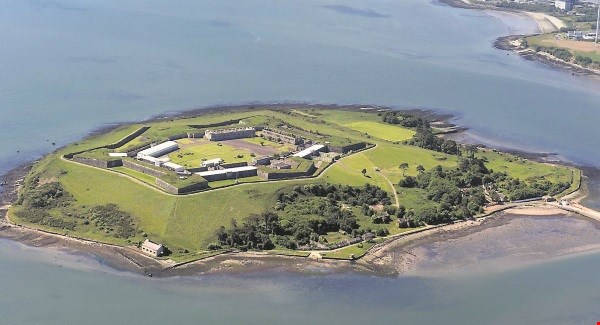In This Section
- Home
- Collections
- Atlas Resources for Schools
- Cork Fatality Register
- Mapping the Irish Revolution
- Mapping IRA Companies, July 1921-July 1922
- Mapping the Burning of Cork, 11-12 December 1920
- Martial Law, December 1920
- The IRA at War
- The Railway Workers’ Munitions Strike of 1920
- The Victory of Sinn Féin: The 1920 Local Elections
- The War of Words: Propaganda and Moral Force
- The IRA Offensive against the RIC, 1920
- De Valera’s American Tour, 1919-1920
- The British Reprisal Strategy and its Impact
- Cumann na mBan and the War of Independence
- The War Escalates, November 1920
- The War of Independence in Cork and Kerry
- The Story of 1916
- A 1916 Diary
- January 9-15 1916
- January 10-16, 1916
- January 17-23, 1916
- January 24-30, 1916
- February 1-6 1916
- February 7-14, 1916
- February 15-21, 1916
- February 22-27, 1916
- February 28-March 3, 1916
- March 6-13,1916
- March 14-20, 1916
- March 21-27 1916
- April 3-9, 1916
- April 10-16, 1916
- April 17-21,1916
- May 22-28 1916
- May 29-June 4 1916
- June 12-18 1916
- June 19-25 1916
- June 26-July 2 1916
- July 3-9 1916
- July 11-16 1916
- July 17-22 1916
- July 24-30 1916
- July 31- August 7,1916
- August 7-13 1916
- August 15-21 1916
- August 22-29 1916
- August 29-September 5 1916
- September 5-11, 1916
- September 12-18, 1916
- September 19-25, 1916
- September 26-October 2, 1916
- October 3-9, 1916
- October 10-16, 1916
- October 17-23, 1916
- October 24-31, 1916
- November 1-16, 1916
- November 7-13, 1916
- November 14-20, 1916
- November 21-27-1916
- November 28-December 4, 1916
- December 5-11, 1916
- December 12-19, 1916
- December 19-25, 1916
- December 26-January 3, 1916
- Cork's Historic Newspapers
- Feature Articles
- News and Events
- UCC's Civil War Centenary Programme
- Irish Civil War National Conference 15-18 June 2022
- Irish Civil War Fatalities Project
- Research Findings
- Explore the Fatalities Map
- Civil War Fatalities in Dublin
- Civil War Fatalities in Limerick
- Civil War Fatalities in Kerry
- Civil War Fatalities in Clare
- Civil War Fatalities in Cork
- Civil War Fatalities in the Northern Ireland
- Civil War Fatalities in Sligo
- Civil War Fatalities in Donegal
- Civil War Fatalities in Wexford
- Civil War Fatalities in Mayo
- Civil War Fatalities in Tipperary
- Military Archives National Army Fatalities Roll, 1922 – 1923
- Fatalities Index
- About the Project (home)
- The Irish Revolution (Main site)
Tunnels Discovered under Spike Island

Hundreds of metres of tunnels have been discovered at Spike Island, which have yielded up prisoners’ badges and a host of military equipment, including parts of coastal defence guns, writes Sean O’Riordan, Irish Examiner
By Sean O’Riordan, Irish Examiner
John Crotty, who manages the site for Cork County Council, revealed that the tunnels are under Bastion No 3, known as the old punishment block.
He said they are also aware of a 16th-century tunnel on the island which was used by smugglers, but have sealed the entrance to it at present because it would be unsafe to go in there until it is properly surveyed.
“We knew of the existence of the tunnels under Bastion No 3, but they are a lot bigger than we expected. They go on for hundreds of metres in a U shape. There’s a warren of areas within them for storage,” said Mr Crotty.
“We’re finding a lot of military equipment down there including parts for guns and badges for prisoners, which are more than 100 years old. There’s also a bellows, which formed part of a workshop and we are hoping to restore that and put it and other artifacts on display.”
He said these tunnels were probably built between the early and mid-1800s.
“The smugglers’ tunnel was used in the 16th century and runs from the back of the island to the middle of the island. We know where the opening to it is, but we have covered it up for health and safety reasons,” said Mr Crotty.
He said it is planned that UCC archaeologists would come to the island in the summer of 2018 to look “at excavation opportunities”.
Meanwhile, Mr Crotty and his staff are preparing for the arrival of a special guest. The Irish Prison Service is to hand over the Spike Island Convict Church chalice and paten. They will go on display in the visitor centre.
The chalice and paten were created in 1848 just as Spike Island became a convict depot, spurred by the increasing prisoner numbers due to the famine years.
By the early 1850s the prison population had swollen to 2,300 inmates, making it the largest known prison in the world. Religion played a large part in the reform of prisoners, and the chalice and paten would have been used in services involving tens of thousands of the most notorious murders and thieves in Britain and Ireland. The ceremony will also include the launch of the new book, A Souvenir Guide To The History Of Spike Island.
The visitor attraction has been shortlisted alongside the Guinness Storehouse in Dublin, Buckingham Palace, the Eiffel Tower, the Colosseum in Rome, and the Acropolis, for the European category in the Oscars of the travel industry.
A win for Spike Island would make it three in a row for Ireland.
Titanic Belfast won the title last year and the Guinness Storehouse the previous year.
This article was first published in the Irish Examiner on 11 May 2017
